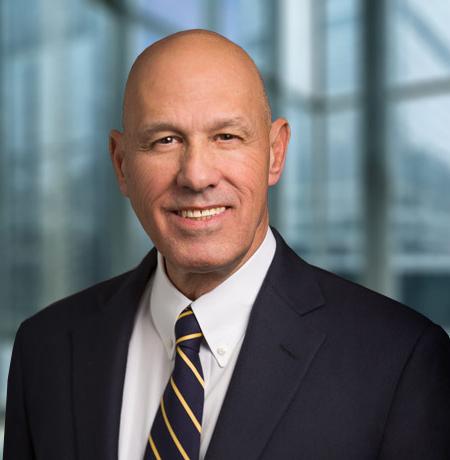Rural America encompasses a broad geography. Almost 20 percent of the U.S. population lives within the 84 percent of the nation’s land area that the Federal Office of Rural Health Policy (FORHP) defines as rural.
Challenges to the Future of Rural Healthcare
Provider organizations in rural America are subject to the same forces that are reshaping healthcare across the nation. Demand for inpatient services is weakening as many procedures and services migrate to outpatient settings and other alternative sites of care. The aging of the Baby Boom generation is shifting payer mix away from commercial insurance to Medicare. Technological advancements are enabling new healthcare delivery models that have the potential to significantly disrupt traditional care models.
These trends can have a unique or magnified impact on rural healthcare providers:
- Declining demand for inpatient care. Many critical access hospitals (CAHs) already have very low daily censuses. The national average daily census for CAHs was 2.7 acute beds in 2016. Further volume declines threaten not only the financial viability of low-census CAHs, but also the quality of care available to patients.
- Shifting payer mix. With populations that tend to be older, many rural areas will feel the impact of the shift of patients from commercial insurance to Medicare more acutely than metropolitan or suburban areas. That impact will be felt even more strongly in areas experiencing population growth driven by retirees.
- Technological advancements. The needs of rural patients were an early driving force in the development of telemedicine. Further advances in virtual care delivery may well have a disproportionate impact on more geographically isolated rural areas, especially if broadband access and related connectivity issues can be resolved.
Given these pressures, significant changes in the nature and delivery of rural healthcare are inevitable.
The Future of the Rural Hospital
Reports on rural health often start with statistics on the number of hospitals that have closed, or are threatened by closure, in rural communities. It is true that 104 rural hospitals closed between January 2010 and April 2019. It also is true that, of these, only 63 facilities completely shut down. Five were converted to nursing or rehabilitation facilities; 16 were converted to outpatient/primary care/rural health center use; and 20 were converted to urgent or emergency care facilities. The most relevant question is not how many hospitals closed. Rather, it is whether the residents of affected communities retained access to needed healthcare services.
The decision to close a hospital is never easy.
In our full article (downloadable below), we discuss a hospital in Streator, Ill., that OSF HealthCare has converted to serve as a rural health center.
The facility in Streator, Ill., was one of the 16 closed hospitals that have been converted to outpatient, primary care, or rural health center use. The decision to close a hospital is never easy. Hospitals often are among the largest employers in a rural community, and local business and political leaders often feel a community needs a full-service hospital to attract economic development.
Based on several factors, however, we believe the decision to convert the hospital to a rural health center with 24/7 emergency care will be the right decision for Streator in the long term. Here's why:
- Streator residents will continue to have access to emergency care and other essential services through the new health center. Continued access to emergency care was the greatest concern of area residents, and was among the first commitments OSF HealthCare made to the community.
- The decision had minimal impact on employment. When OSF HealthCare acquired the Streator hospital, employment was down to 200 employees. OSF has been able to retain approximately 180 employees to staff the new rural health center.
- Streator is in an area that is over-bedded. Within a 25-mile radius of the city are the 97-bed OSF HealthCare OSF Saint Elizabeth hospital in Ottawa, Ill., and the 42-bed OSF Saint James hospital in Pontiac, Ill.; two other hospitals are 35 miles to the northwest. The health system that ran the hospital simply could not maintain sufficient volumes to make the facility financially viable. By taking control of the site, OSF HealthCare had an opportunity to rationalize services within a local network of hospitals and other providers. Travel times to the hospitals in Ottawa and Pontiac are comparable to travel times for many living in the Chicago metropolitan area, and 24/7 emergency services remain available to Streator residents if travel to a hospital is not feasible.
In short, conversion of the Streator hospital to a health center with a free-standing rural emergency facility helped the community avoid the two greatest impacts associated with rural hospital closures: lost access to emergency care and the economic impact of lost jobs. And, as described later in this article, it has converted excess inpatient space into space that better supports the community’s long-term health.
Conversion of the Streator hospital helped the community avoid the two greatest impacts associated with rural hospital closures
Conversion of the Streator facility could serve as a model for other health systems seeking to rationalize the provision of services within an owned network of rural facilities. A health system can provide clinical, financial, operational, and technological support to a rural health center. In turn, the center can serve as a spoke to the hub of larger facilities within the system’s network. Within the context of a system as a whole, a rural health center’s return on investment can be tied to downstream revenues from referrals. A health center’s focus on improving community health also can result in savings under a system’s managed or accountable care contracts.
Without the backing of a health system, or the opportunity to capture downstream revenues or savings, independent rural hospitals have more limited options, particularly in communities that face both declining populations and declining inpatient volumes. One possible solution—found in both the Medicare Payment Advisory Commission’s recommendations to Congress and the bipartisan-sponsored (but not yet passed) Rural Emergency Acute Care Hospital (REACH) Act —would end the requirement that rural hospitals maintain inpatient beds to receive Medicare payments. Instead, rural hospitals could convert to stand-alone emergency departments, with the option of changing back to an inpatient hospital if circumstances change. A converted facility would still be able to offer ambulance and outpatient services, and be paid for these services as well as for emergency care.
The future of the rural hospital will be brightest in areas that are experiencing population growth. In areas were population trends are flat or declining, the number of hospitals that can be sustained by the local population likely will continue to shrink. The future of those hospitals will depend on the ability of larger health systems to grow and support the conversion of facilities in their networks, or the willingness of legislators to support a more flexible model for rural healthcare facilities.








